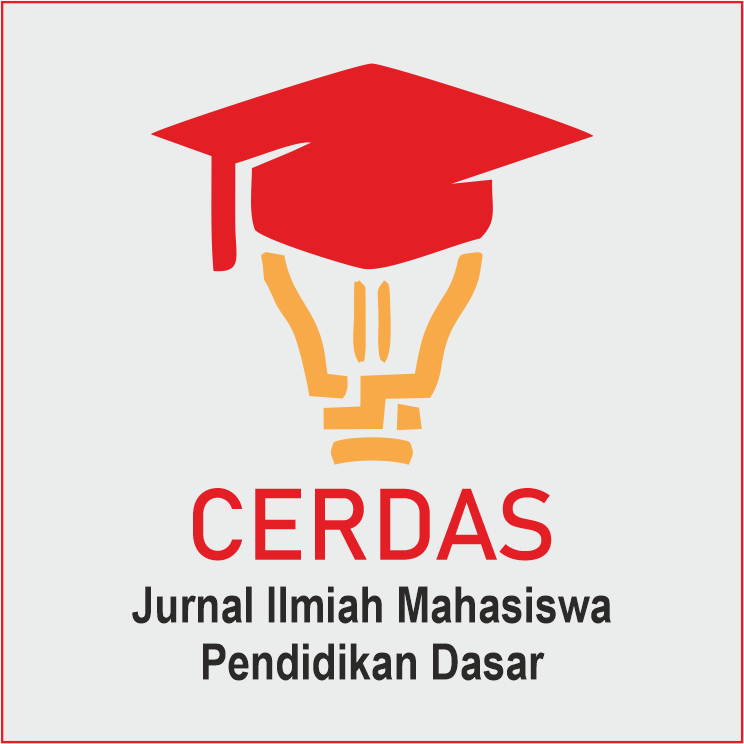PENERAPAN MODEL INKUIRI PADA MATERI SIFAT-SIFAT BENDA ILMU PENGETAHUAN ALAM (IPA) DALAM MENINGKATKAN AKTIVITAS DAN HASIL BELAJAR SISWA KELAS III SD NEGERI 1 KOTA BARU
Keywords:
Classroom Action Research, Inquiry Model, Elementary Science Learning OutcomesAbstract
This study is motivated by the low problem solving ability of students, students are less active and communicated during inquiry model learning, learning in the classroom is still passive teacher centered so that students become passive, and students tend to play more when the teacher is explaining inquiry model learning, The purpose of this study is to determine the learning outcomes of students with the application of inquiry models on the properties of objects and the activities of teachers and students in the teaching and learning process with the application of inquiry models on the properties of objects in class III SD Negeri 1 Kota Baru. This type of research is Classroom Action Research which consists of four stages, namely planning, action, observation, and reflection. The subjects in this study were third grade students of SD Negeri 1 Kota Baru as many as 24 students consisting of 11 male students and 13 female students. The results showed that there was an increase in the science learning outcomes of third grade students at SD Negeri 1 Kota Baru using the application of the inquiry model on the material properties of objects. The improvement in student learning outcomes can also be seen from learning completeness with the percentage of learning completeness increasing in the results of the second cycle post test, out of 24 students who took the test, there were 18 students who completed learning and there were 6 students who did not complete learning. With a learning completeness percentage of 75%. This proves that the application of the Inquiry Model can improve the science learning outcomes of third grade students at SD Negeri 1 Kota Baru in the 2023/2024 school year.
References
Anatan, F., & Hanye, P. Meningkatkan Aktivitas Belajar IPA Menggunakan Metode Percobaan di Sekolah Dasar Negeri 28 Sei Laki. Jurnal Pendidikan dan Pembelajaran Khatulistiwa (JPPK), 3(6).
Erfandi, D. P. (2018). Pengaruh Motivasi Dan Kebiasaan Belajar Terhadap Hasil Belajar Akuntansi Kelas X Akuntansi di SMK 2 Muhamadiyah Pekanbaru (Doctoral dissertation, Universitas Islam Riau).
Gischa, S. (2022, November 21). Benda Padat: Pengertian, Sifat, dan Ciri-cirinya - Kompas.com. KOMPAS.com. https://amp.kompas.com/skola/read/2022/11/21/083000669/benda-padat-pengertian-sifat-dan-ciri-cirinya
Khainayya, R. P. (2022, June 9). Sifat-Sifat Benda Cair, Contoh dan Manfaatnya dalam Kehidupan Sehari hari. Tokopedia Blog. https://www.tokopedia.com/blog/sifat-benda-cair-edu/amp/?utm_source=google&utm_medium=organic
KHOIRIYAH, K. (2018). Penerapan Pendekatan Keterampilan Proses Dalam Meningkatkan Hasil Belajar Ipa Peserta Didik Pada Tema Indaahnya Kebeersamaan Kelas Iv Mi Miftahul Ulum Loram Kulon Jati Kudus Tahun Pelajaran 2018/2019 (Doctoral dissertation, IAIN KUDUS).
Mawardi, R. A. (2022, August 29). 11 Sifat Benda Gas dan Contohnya, Mudah Dipahami Siswa. Detikedu. https://www.detik.com/edu/detikpedia/d-6259275/11-sifat-benda-gas-dan-contohnya-mudah-dipahami-siswa/amp
Nurhakim, A. (2022, December 23). Pengertian Model Pembelajaran Inkuiri beserta Tujuan, Karakteristik, Jenis, dan Contoh. Quipper Blog. https://www.quipper.com/id/blog/info-guru/model-pembelajaran-inkuiri/amp/
View of Pembelajaran IPA sekolah dasar berbasis pendidikan karakter. (n.d.). https://jurnal.albidayah.id/home/article/view/125/124





